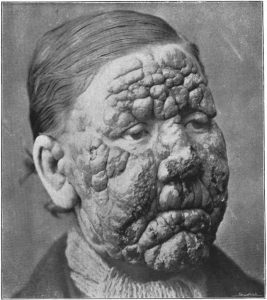 Some time ago I wrote a blog on sun exposure and depression, emphasizing the importance of a protein called brain derived neurotropic factor (BDNF). This is an update.
Some time ago I wrote a blog on sun exposure and depression, emphasizing the importance of a protein called brain derived neurotropic factor (BDNF). This is an update.
BDNF is a factor in nerve growth and maturation, and is essential in synapse formation and plasticity. A lack of of it is implicated in psychiatric disorders such as schizophrenia, intellectual disability, autism and depression. Interestingly, it has been shown that unless there is sufficient BDNF in the brain, conventional antidepressants do not work very well,[1] and when BDNF is infused directly into the brains of rodents, it produces an antidepressant effect.[2]
It has also been shown that BDNF has a seasonal variation in concentration correlating with the amount of ambient sun; it increases in the spring and summer and decreases in fall and winter. [3] The authors of this research described the importance of their findings thusly: “This finding is important for our understanding of those factors regulating BDNF expression and may provide novel avenues to understand seasonal dependent changes in behavior and illness such as depression.”
BDNF has been shown to increase significantly after bright light exposure,[4] and in what we would consider to be a remarkably important study, both light exposure and treadmill exercise increased its expression of
in rats,[5] or as the researchers showed, exercise and/or bright light promoted neurogenesis (new nerve cell growth) in the adult rat brain. How important is this finding for adults who are worried about cognitive decline? We are actually seeing an example of new brain cells being built by bright light and exercise. What a wonderful way to help prevent Alzheimer’s disease and maintain mental sharpness into old age! Don’t forget your (safe) sunlight!
[1] Björkholma C, Monteggiab, L. BDNF — a key transducer of antidepressant effects. Neuropharmacology. 2016 March ; 102: 72–79.
[2] Siuciak JA, Lewis DR, Wiegand SJ, Lindsay RM. Antidepressant-like effect of brain-derived neurotrophic factor (BDNF). Pharmacol. Biochem. Behav. 1997; 56(1):131–137.
[3] Molendijk ML, Haffmans JP, Bus BA, Spinhoven P, Penninx BW, Prickaerts J, Oude Voshaar RC, Elzinga BM. Serum BDNF concentrations show strong seasonal variation and correlations with the amount of ambient sun. PLoS One. 2012;7(11):e48046.
[4] Tirassa P1, Iannitelli A, Sornelli F, Cirulli F, Mazza M, Calza A, Alleva E, Branchi I, Aloe L, Bersani G, Pacitti F. Daily serum and salivary BDNF levels correlate with morning-evening personality type in women and are affected by light therapy. Riv Psichiatr. 2012 Nov-Dec;47(6):527-34.
[5] Kwon SJ, Park J, Park SY, Song KS, Jung ST, Jung SB, Park IR, Choi WS, Kwon SO. Low-intensity treadmill exercise and/or bright light promote neurogenesis in adult rat brain. Neural Regen Res. 2013 Apr 5;8(10):922-9.
 Leprosy is a bacterial disease that has been historically mentioned as a scourge, when it was considered to be incurable and disfiguring. Symptoms that develop include granulomas (inflammation caused by a collection of immune cells) of the nerves, respiratory tract, skin, and eyes. This may result in a lack of ability to feel pain, followed by the loss of parts of extremities, due to repeated injuries or infection of unnoticed wounds.[1] About 180,000 people worldwide are diagnosed with leprosy yearly, and about 100 people are diagnosed in the U.S. each year.[2] Leprosy has been considered to be a disease which has been eradicated, but such is not the case. For example, an article in an Indian paper shows it is much more prevalent in highly urbanized areas (areas of less sun) than in rural or less polluted areas[3] (areas of more sun). Also, when the bacteria that cause leprosy are exposed to ultraviolet light, the procedure kills half of the bacteria.[4] Therefore, sunlight may fight leprosy as it fights other bacteria, by stopping them at the source. Sun is a potent bactericide. Dr. Kime, in his book, Sunlight Could Save Your Life, reviewed the results of research conducted between 1886 and 1909. It showed the following bacteria were killed by ultraviolet light: anthrax, plague, streptococci, tubercle bacillus, cholera, staphylococcus, colon bacillus and dysentery bacillus. Sun was virtually forgotten with the advent of antibiotic drugs, but now the interest has returned. While watching a newscast, I noticed the news ticker announcing, “Sunshine is the most effective anti-infection therapy.” I believe that is true; sun exposure is provided to the earth to help prevent myriad diseases, but many of us try to avoid its healing powers. Non-burning sun exposure is a magnificent healer, and also a preventer of disease in those cases where it cleans the environment of noxious microorganisms.
Leprosy is a bacterial disease that has been historically mentioned as a scourge, when it was considered to be incurable and disfiguring. Symptoms that develop include granulomas (inflammation caused by a collection of immune cells) of the nerves, respiratory tract, skin, and eyes. This may result in a lack of ability to feel pain, followed by the loss of parts of extremities, due to repeated injuries or infection of unnoticed wounds.[1] About 180,000 people worldwide are diagnosed with leprosy yearly, and about 100 people are diagnosed in the U.S. each year.[2] Leprosy has been considered to be a disease which has been eradicated, but such is not the case. For example, an article in an Indian paper shows it is much more prevalent in highly urbanized areas (areas of less sun) than in rural or less polluted areas[3] (areas of more sun). Also, when the bacteria that cause leprosy are exposed to ultraviolet light, the procedure kills half of the bacteria.[4] Therefore, sunlight may fight leprosy as it fights other bacteria, by stopping them at the source. Sun is a potent bactericide. Dr. Kime, in his book, Sunlight Could Save Your Life, reviewed the results of research conducted between 1886 and 1909. It showed the following bacteria were killed by ultraviolet light: anthrax, plague, streptococci, tubercle bacillus, cholera, staphylococcus, colon bacillus and dysentery bacillus. Sun was virtually forgotten with the advent of antibiotic drugs, but now the interest has returned. While watching a newscast, I noticed the news ticker announcing, “Sunshine is the most effective anti-infection therapy.” I believe that is true; sun exposure is provided to the earth to help prevent myriad diseases, but many of us try to avoid its healing powers. Non-burning sun exposure is a magnificent healer, and also a preventer of disease in those cases where it cleans the environment of noxious microorganisms.
[1] https://en.wikipedia.org/wiki/Leprosy
[2] http://www.webmd.com/skin-problems-and-treatments/guide/leprosy-symptoms-treatments-history#1
[3] Kumar, R. Urbanites More Prone to Leprosy. Merinews April 14, 2008. (available at http://www.merinews.com/catFull.jsp?articleID=132447)
[4] Truman RW, Gillis TP. The effect of ultraviolet light radiation on Mycobacterium leprae. Int J Lepr Other Mycobact Dis. 2000 Mar;68(1):11-7.
A recent sunshine article in the UK online newspaper, The Mail, led with the headline, “Sunshine breaks could mean better mental health.” It then went on to describe how many shift workers, as well as other residents of the UK, are deficient in vitamin D.[1] Quoting from research published in the Journal BMC Public Health,[2] the article stated that about 91% of residents are at least insufficient in vitamin D.
Vitamin D deficiency of that extent is a health crisis, of that there is no doubt. It is also a surety that the way to combat vitamin D deficiency is by taking “sunshine breaks.” However, it is misleading to assume it is vitamin D deficiency that is responsible for the entire problem with mental health and other diseases as they relate to sun exposure. Consider the fact that lack of sunshine deficiency also causes problems beyond vitamin D deficiency. For example, the natural 24-hour cycles, called circadian rhythms, are desynchronized by lack of sunshine in the morning. This causes us to feel out of synch and to be more susceptible to many diseases including cancer.
Remember that sun exposure also leads to the production of serotonin,[3] endorphin,[4] dopamine,[5] and BDNF,[6] all of which have a positive effect on mood and mental health.
Sunshine is vital to mental and physical health, and that health is not due to vitamin D alone. Take a holistic view of the importance of sunshine.
[1] http://www.nwemail.co.uk/news/Sunshine-breaks-could-mean-better-mental-health-88b00574-032c-4467-846c-1eff0514d4e8-ds
[2] Sowah D, Fan X, Dennett L, Hagtvedt R, Straube S. Vitamin D levels and deficiency with different occupations: a systematic review. BMC Public Health. 2017 Jun 22;17(1):519.
[3] Lambert GW, Reid C, Kaye DM, Jennings GL, Esler MD. Effect of sun and season on serotonin turnover in the brain. Lancet. 2002 Dec 7;360(9348):1840-2.
[4] Asta Juzeniene and Johan Moan. Beneficial effects of UV radiation other than via vitamin D production: Dermato-End Holick, M. The UV Advantage 2. Ibooks 2003, New York. Ocrinology 2012;4(2):109–117.
[5] Holick, M. The UV Advantage 2. Ibooks 2003, New York.
[6] Molendijk ML, Haffmans JP, Bus BA, Spinhoven P, Penninx BW, Prickaerts J, Oude Voshaar RC, Elzinga BM. Serum BDNF concentrations show strong seasonal variation and correlations with the amount of ambient sun. PLoS One. 2012;7(11):e48046.
By Marc Sorenson, EdD, Sunlight Institute
While contemplating my youth, growing up on our farm and ranch on the Utah/Nevada border, I mused on the amount of sunlight exposure that the hard summer work required. I was in the fields much of the time and spent a lot of time moving irrigation water, bucking hay bales and building and repairing fences. When the work allowed it, I shed my shirt until the sun became uncomfortable and then donned my cowboy hat and a long-sleeved shirt to protect against getting too much of that wonderful UV light. Some work, such as throwing hay bales on wagons, did not allow a bare body, because alfalfa hay is very scratchy. Much of the time, however, I was able to soak up the sun, going shirtless whether driving a tractor or chasing down recalcitrant cattle and sheep on my horse. My hands were often in the earth as I planted gardens and barley and alfalfa fields. Occasionally, I overdid the sun exposure and paid the price with a sunburn, but that was an infrequent occurrence. My friends called me “the brown man” although I am a blue-eyed, light skinned Caucasian. My tan was very deep; hence the moniker.
Those halcyon days of my youth were summer days, and I was never ill in that season; all of that sunlight kept me well, and it also helped to keep my mood elevated. Melanoma was never a worry for me or for the other farm boys and girls who lived in that area, and I have heard of no one who grew up there who ever contracted the disease, although they had the same ethnicity as I. Of course, lack of melanoma was to be expected, because people who spend much of their life in the sun are far less likely to contract melanoma than those whose stay indoors. For example, Diane Godar and her colleagues have presented evidence that outdoor workers, while receiving 3-9 times the sunlight exposure as indoor workers, have had no increase in melanoma since before 1940, whereas melanoma incidence in indoor workers has increased steadily and exponentially.[1] [2] [3]
This cogitating on my youth was triggered by reading an article entitled A senior moment: Get ‘down and dirty’ — Gardening is good for you![4] It discussed all the benefits of gardening and related some research regarding its therapeutic use:
-
Exercise that strengthens both the upper-and lower-body muscles, and especially hand strength
-
Reduces arthritis
-
Promotes circulation
-
Reduces heart rate
-
Lowers blood pressure
-
Burns calories
-
Improves sleep
-
Exposes the body to sunlight (hooray) to reset the circadian rhythms and combat depression
-
Promotes better nutrition
-
Increases self-esteem
-
Gives a better sense of time
-
Provides aromatherapy
Of course, some of these benefits of gardening are really benefits of sunlight, as mentioned in the article. However, there may be another factor at play; when we connect with the earth, it improves our health,[5] including heart health[6] and mood[7] through a transfer of electrons from the earth to our bodies.
What have we lost as we have adopted our sedentary, indoor lifestyles? Among other things, we have lost our good nutrition, our sunlight exposure and our contact with the earth. It is no wonder that working in a garden has such beneficial effects on our health! It gives us back at least some of our basic human health needs. So if you don’t have a garden, find one and get out in the sunlight!
Having been reminded of some of those vital needs, I am anticipating with alacrity my upcoming week at my Nevada ranch, where I will rusticate with my wife Vicki and my friends, Drs. Bill Grant and Adiel Tel-Oren. We will be soaking up the sunshine, feeling the dark mountain soil, eating nutritious foods and exulting in the beauty of the aspens and pines. We will also be renewing friendships with the birds, the ducks, the deer, the Elk, the wild turkeys and other wildlife that have no worries about us, because we don’t kill and eat them.
Sunlight, peace and friendships—it doesn’t get any better than this!
[1] Godar D, Landry, R, Lucas, A. Increased UVA exposures and decreased cutaneous Vitamin D3 levels may be responsible for the increasing incidence of melanoma. Med Hypotheses 2009;72(4):434-43
[2] Godar D. UV doses worldwide. Photochem Photobiol 2005;81:736–49.
[3] Thieden E, Philipsen PA, Sandby-Møller J, Wulf HC. UV radiation exposure related to age, sex, occupation, and sun behavior based on time-stamped personal dosimeter readings. Arch Dermatol 2004;140:197–203.
[4] http://www.chicoer.com/opinion/20150417/a-senior-moment-get-down-and-dirty-x2014-gardening-is-good-for-you.
[5] Oschman JL, Chevalier G, Brown R. The effects of grounding (earthing) on inflammation, the immune response, wound healing, and prevention and treatment of chronic inflammatory and autoimmune diseases. J Inflamm Res. 2015 Mar 24;8:83-96.
[6] Chevalier G, Sinatra ST, Oschman JL, Delany RM. Earthing (grounding) the human body reduces blood viscosity-a major factor in cardiovascular disease. J Altern Complement Med. 2013 Feb;19(2):102-10
[7] Chevalier G. The effect of grounding the human body on mood. Psychol Rep. 2015 Apr;116(2):534-43

